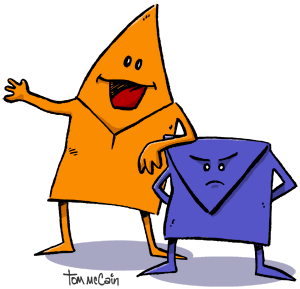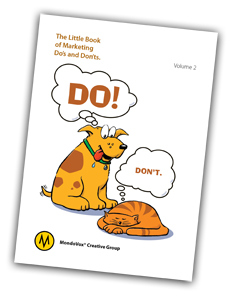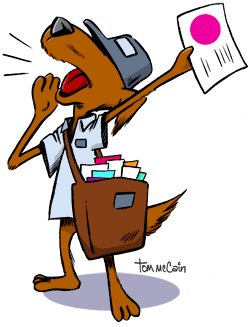 Creating effective envelopes doesn’t necessarily mean spending a lot of money. To the contrary, it means understanding your audience and offer and then creating an appropriate fit. Here’s how to ensure that recipients welcome your next envelope package.
Creating effective envelopes doesn’t necessarily mean spending a lot of money. To the contrary, it means understanding your audience and offer and then creating an appropriate fit. Here’s how to ensure that recipients welcome your next envelope package.
Do
- Ensure your envelope is at least ¼” larger than the inserts.
- Put your company name on the envelope if you’re confident it will cause a positive reaction from recipients—otherwise leave it off.
- Match images, graphics and copy appropriately to your audience.
- Use postage stamps if possible, especially for small mailings or anything that requires a personal touch.
- Use metered mail as a second choice, but avoid the dreaded indicia—studies show that Fortune 500 companies route 30% of Standard Mail to the wastebasket immediately.
- Personalize—that can mean anything from variable-data messaging to using a legible script font or actual handwriting—non-profits read this again.
- Include teaser copy that is compelling, intriguing and invites curiosity.
- Test envelope color, size, style and paper—differences might attract people who pitched a mailing before.
- Consider an enclosure that creates an envelope lump—people can’t resist them, but be aware that it will add to postage costs.
- Play the angles—an angled teaser line or even a slightly angled stamp can make your envelope get noticed.
Don’t
- Use form letter or bill formats—they typically either get tossed or put with the bills.
- Use a window envelope—possible exceptions are if it’s the only way to get killer personalization inside or if it’s a full view that shows a compelling graphic.
- Put your offer on the envelope—especially to a cold list.
- Underestimate the power of envelope tone—official, fun, etc.
- Neglect to plan well in advance if you want to use a specialty envelope—custom envelopes take longer to produce.
- Address your B2B mail to generic titles if at all possible—nothing screams mass mail louder than generics.
- Skimp on any element of address accuracy—Cathy with a “C” might tune you out in a heartbeat if you spell her name with a “K.”
- Dupe recipients into thinking your envelope contains something it doesn’t—tone needs to fit the actual contents.
- Use statements like “Open Immediately”—see above.
- Forget to order 5–10% more envelopes than you need—you’ll likely lose some in setup.
- Time your mail to arrive on Monday, the heaviest mail day of the week—aim for Tuesday, the lightest day, or Wednesday, the second lightest.
By Larry Bauer
![]()
 Missed Getting Your Copy of The Little Book of Marketing Do’s & Don’ts? Not to worry. We’ve made digital versions available via SlideShare. The Little Book of Marketing Do’s & Don’ts is a collection of the most viewed “Do’s & Don’ts” published by our MondoBeat newsletter including:
Missed Getting Your Copy of The Little Book of Marketing Do’s & Don’ts? Not to worry. We’ve made digital versions available via SlideShare. The Little Book of Marketing Do’s & Don’ts is a collection of the most viewed “Do’s & Don’ts” published by our MondoBeat newsletter including:
- Taglines
- Print Advertising
- Referrals
- Trade Shows
- Corporate Brochures
- Direct Mail
- Thought Leadership
- White Papers
Simply visit our SlideShare page to download your complimentary copy.








